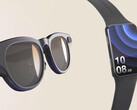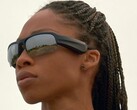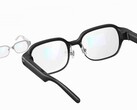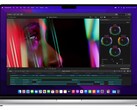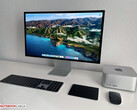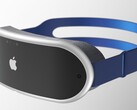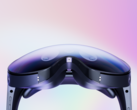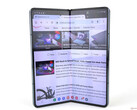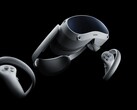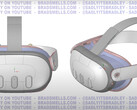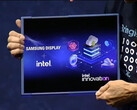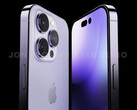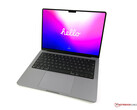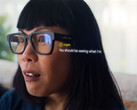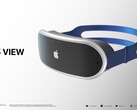Apple has reportedly tasked Samsung and LG with increasing the pixel density of the microdisplays they will provide for its upcoming AR/VR device, tentatively named Apple Glasses. Korean media is reporting that the two display industry juggernauts have been asked to up the pixel density of the OLED-on-silicon (OLEDoS) panels they will be developing, from the initial 2800 pixels per inch (PPI) requirement, to the whopping 3500 PPI.
For comparison, Sony will be releasing its PlayStation VR2 headset with panels that are "well above 800 PPI," as per reputed industry analyst Ross Young which is "is a record high for mass-produced AMOLED," as that PPI count would be on a much larger, 6.4-inch screen than the Glasses' microdisplays. Apparently, Apple's AR/VR device display aspirations are even higher.
Since Sony is rumored to be the first supplier of screens for the Apple Glasses contraption, and LG or Samsung are only expected to join the supply chain in 2024, the first generation of Apple's VR device may not be as immersive of an experience as the subsequent upgrades. Apple is expected to announce its AR/VR device in the spring, so the 3500 PPI OLEDoS panels (if Samsung and LG manage to pull these off) may be arriving for the Apple Glasses 2 generation.
On a microdisplay, or a screen with an inch or lower diagonal, the PlayStation VR 2's rumored 2000×2040 pixels resolution per eye would return a pixel density of about 2850 PPI, according to the DPI calculator. That's close to what the industry sources claim that Apple initially demanded from Samsung and LG, and probably what Sony will be providing for the first Glasses generation, too. With its Xperia line, Sony already offers the highest pixel density on a phone display at the moment, as some of its high-end handsets have 6.5-inch OLED panels with 4K resolution and pixel densities north of 600 PPI.
The OLEDoS abbreviation stands for organic light-emitting diodes deposited on a flexible silicon, instead of a glass substrate, and it is a nascent technology for microdisplays aimed at Metaverse-bound AR/VR headgear. Samsung Display initially scoffed at the idea of pouring money into its R&D as it expected it to be too much of a niche market.
Its parent company's top brass, however, seeing how Sony and LG wiggled into the supply chain for Apple's Glasses, scolded it for dismissing OLEDoS and now Samsung will be trying to beat both Sony and LG for the VR microdisplay supply crown. Back in August, a Samsung Display exec confirmed its 2024 microdisplay production schedule and said that the "paradigm shift in the display industry in microdisplay will be particularly noticeable," possibly referring to upcoming VR devices from Sony, Meta, Apple, and even Google.
Samsung's secret weapon in this crusade would be a harder to master LEDoS technology that can offer up to the jaw-dropping 6600 PPI, tip industry insiders. In any case, once Apple announces its AR/VR Glasses headgear, it's off to the pixel density specification races for all major OLED display suppliers, it seems.
Get the Sony PlayStation VR & Gran Turismo Sport Bundle on Amazon





